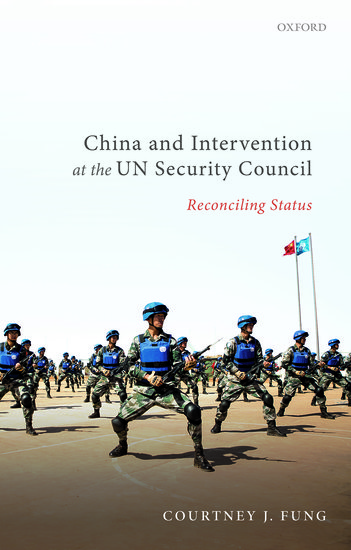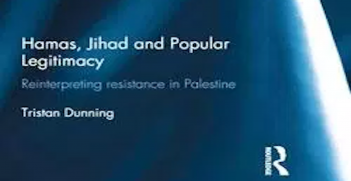Book Review: China and Intervention at the UN Security Council

Status considerations have been a key factor influencing Beijing’s decisions on intervention at the UN Security Council. As China settles into its status as a great power, its need to adhere to prevailing norms appears to be diminishing.
Courtney J. Fung’s China and Intervention at the UN Security Council offers a fascinating insight into the rationales, debates, and policy choices of Beijing’s responses to humanitarian interventions. In particular, this new addition to the growing scholarship on Chinese foreign policy seeks to explain an important, but thus far understudied, determinant—status—that increasingly features with increasing prominence in its decisions.
Fung presents a compelling case that status has a role in China’s decision-making at the UN Security Council. Using a rich database of official statements, interviews, UN documents, and media coverage, she examines three cases—Darfur (Sudan), Libya, and Syria—where Beijing has been presented with the difficult challenge of reconciling its long-held principle of respecting sovereignty and the need to respond to calls for intervention.
Fung makes several key arguments. First, status considerations, especially in circumstances where China’s peer groups (France, UK, and the US, P-3 at the Security Council; and the Global South, most prominently represented through the Nonaligned Movement and regional groups), can have an impact on how Beijing makes decisions on intervention. Second, China is more likely to support, or at a minimum, to not oppose proposals for interventions at the UN Security Council if and when its peer groups have adopted a unified position on a single policy position, remained coherent without defection, and been willing to exert social costs on China on its non-compliance with group standards. Indeed, Beijing has been compelled to make adjustments, and at times major compromises, to maintain its ranking in the peer groups, while making rhetorical adherence to its fundamental principles such as respect for sovereignty and non-interference in domestic affairs.
The book makes a number of contributions. It presents detailed discussions of Chinese deliberations at the UN Security Council on intervention matters; it advances our understanding of Chinese foreign policy beyond the Realist and Institutionalist lenses; it offers a succinct review of Chinese discourses on regime change; and it sheds light on Beijing’s evolving perspectives on normative issues such as Responsibility to Protect (R2P) and Protection of Civilians (POC).
Indeed, the last point is especially telling as all three cases present Beijing with serious normative challenges. Not only did they fall outside of China’s comfort zone with regard to allowing humanitarian intervention without host-country consent, they also ran the risk of setting precedents for regime changes. Yet China supported one (Sudan) and acquiesced in the second (Libya). However, it has shown, and continues to show, opposition in the third (Syria), largely as a result of its regret over how the intervention transpired in Libya.
What is particularly intriguing is Beijing’s response to calls for intervention in the Syrian civil war. As Fung argues, for social influence to work on China’s behaviours, certain prior conditions must be present. These include unified positions on issues, no defector, and the grouping’s ability to inflict punishment. In the Syrian case, though, while these conditions did exist, they were not sufficiently tight, therefore allowing Chinese diplomats to hold fast to their positions opposing any non-consensual measures against Syria. Russia’s positions, while not always aligned with Chinese ones, certainly helped. But it was likely the Libyan debacle that caused Beijing to conclude: “not again.”
While the book convincingly uncovers the answers to the what and how questions related to China’s response to intervention at the UN Security Council, it also raises additional questions. One is whether China’s own ambivalence about its identity exposes itself to peer pressure. China’s past glory, its unique institutional position, and recent achievements categorically place it in the club of great powers. At the same time, its self-assigned membership of the Global South is more reflective of a United Front approach of an earlier era than an unequivocal solidarity with the developing world in both normative and material terms.
Another issue is the broadened and redefined concepts of security and sovereignty, and the role of the UN Security Council. Since the end of the Cold War, the international community has placed greater emphasis on human security, in contrast to the traditional notion of state sovereignty. The endorsement of R2P and more frequent humanitarian intervention in intra-state conflicts pose particular challenges to Beijing’s views of both the notion of sovereignty and the role of UN Security Council. The concerns over this significant reinterpretation are captured, albeit only briefly, in Fung’s review of Chinese perspectives on regime change.
The third relates to the domestic sources of Chinese foreign policy. If the international structure at any given time provides the external opportunities and constrains for states to operate, then any variation in states’ responses to issues of similar categories will need to be explained at the domestic level. Bureaucratic politics, leadership, and decision-making procedures become important intervening variables. Clearly, Beijing’s responses to intervention examined in this book all took place under more or less the same systemic condition: a unipolar international system. Chinese positions at UN Security Council deliberations on intervention, while unitary in appearance, in fact would have been the outcomes of negotiation by various domestic stakeholders. Uncovering this “black box” remains at once imperative and a continuing challenge for scholars and policymakers alike.
Finally, and related to the previous point, is the need to examine and differentiate between a China still in power transition and one that “has arrived” and, as a result, has become more confident and assertive. Chinese responses to intervention in Sudan, Libya, and the initial phase of Syria were the policy choices under a rather bland, benign, and low-profile Hu Jintao administration that presented itself as a peaceful rising power seeking to build a harmonious world. While still holding dear the sanctity of state sovereignty, suspicious of the hidden agendas of some humanitarian interventions, and concerned over the potential consequences of regime changes, Beijing’s foreign policy regarding intervention was cautious and passive, seeking to minimise the costs to its status and social ranking in peer groups.
With Xi Jinping at the helm since late 2012, Chinese foreign policy has clearly become more proactive and indeed, assertive. Increasingly, on the issues of humanitarian intervention, Beijing is more willing to engage in discourses defining norms and actions affecting how peacekeeping and human protection are implemented. In significant ways, Xi’s China is moving from a norm taker to a norm shaper, or at least part of norm-shaping undertakings at the United Nations and other international and regional organizations. It would be interesting to apply the analytical framework developed in Fung’s book to some of the recent cases (e.g., Rohingya in Myanmar) where intervention at the UN Security Council and Chinese positions reveal the extent to which status considerations continue to affect Beijing’s policy choices.
Jingdong Yuan is an associate professor at the Centre for International Security Studies, University of Sydney.
This is a review of Courtney J. Fung China and Intervention at the UN Security Council: Reconciling Status (Oxford University Press 2019). ISBN: 9780198842743
This article is published under a Creative Commons Licence and may be republished with attribution.





